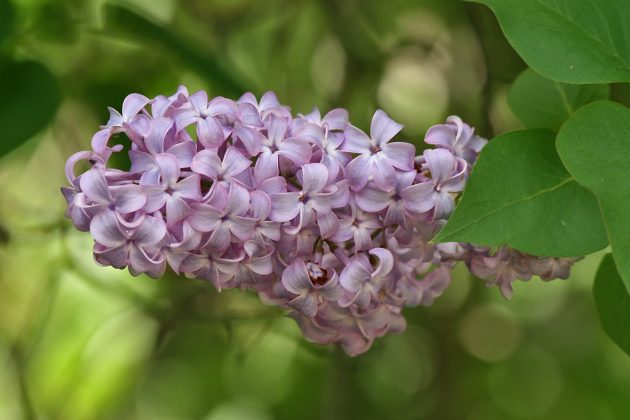The difference between lilac and Lavender is that lilac is a lighter-colored flower, and Lavender has a more pungent scent. Additionally, lilacs are typically smaller than lavenders, and they have more petals. Lavenders also have more stamen than lilacs. Both plants are members of the Lavandula genus, but critical differences between them can affect how they are used. Lilac is a flower. The color of the flowers can differ, but the one key difference between lilac and Lavender is that lilac is a lighter-colored flower, and Lavender has a more pungent scent. The lilac flower is a familiar sight in the summer, and it’s considered one of the best flowering plants to grow in your garden. Lilacs are very easy to grow and can be grown from seed or cuttings.
A selection of lavender flowers and lavender plants. There are two types of true Lavender, purple and blue. The color of the flowers can vary from white to purple, depending on the species. Lavender is a beautiful addition to any garden! Lavender is typically more potent and has a more pungent scent than lilac. Additionally, Lavender is more commonly used as an oil or for its flowers, which can be dried and used in facials or aromatherapy. Lavender has been used throughout history as a medicinal and cosmetic preparation.
Lavender is native to the Mediterranean, where it grows in dry, sunny areas, such as on cliffs and near the sea. The plant reaches up to 4 meters (13 feet) in height and produces white flowers that bloom from April through June. Lavender has a long history of use. It was used for its medicinal and cosmetic properties as far back as early Mesopotamia, where it treated ailments such as toothache, boils, and infections.
What is a Lilac?
Lilacs are a genus of flowering plants in the family Liliaceae and include the common lilac. The lilac is native to China and Korea and is widely cultivated as an ornamental plant. The common name “lilac” is possibly derived from the French word “lilas,” meaning “a small lily.”

The name may also refer to the French-Canadian habit of calling lilacs by their botanical name, which is precisely what they are. The flowers are typically lilac-pink but may also be white, purple, or Lavender. The foliage is lanceolate with a serrated edge, and the leaf margins have a sharp point. The flowers appear in spring before the leaves.
Uses of Lilac
The use of Lilacs includes:
- Flowering shrubs. They are used as a decorative addition to the garden. They have beautiful flowers, and they can be grown in containers or planted in the ground.
- Medicinal plants. They are used to treat heartburn and kidney stones.
- Aromatic plants. They are used to make perfumes, incense, and teas.
- Food plants. They are used to flavor a variety of foods.
- Useful plant. A good source of vitamins A and C.
- Ornamental plants. They are used for their ornamental value.
What is Lavender?
Lavender is a perennial herb that grows to about 1 to 2 feet. The leaves are oval-shaped and have an indented stem. It is native to Europe, Asia, and Africa. It has the common name of “sow thistle” or “fairy flax.” The name is derived from the Greek word σοφία (Sophia), meaning wisdom. It is also called “Lavandula,” after the Latin name for Lavender.

The flowers are small, light purple, and have a sweet scent. They bloom in late spring or early summer and can be found by the hundreds of thousands. The flowers are used in the production of essential oils. There are over sixty known species of Lavender.
- The fragrance of the oil is used to replace oils that have been lost or damaged. Lavender is also an anti-inflammatory that is effective on burns, cuts, and insect bites.
- Lavender is native to the Mediterranean region, where it has been cultivated for 2,500 years.
- In ancient Egypt and Greece, Lavender was used to scenting beds and baths. Lavender Essential Oil is used to scent clothes, linens, and soaps in the home. It can be added to linen or cedar shampoos for a pleasant fragrance.
- Lavender Essential Oil is also used to scent bath products and soaps. Lavender Essential Oil makes a beautiful room odorizer! In ancient Rome, Lavender was used in colognes and fragrances.
Uses of Lavender
Lavender is used to treat skin conditions such as acne and boils. Lavender is also an effective sleep aid and helps treat depression. Lavender has anti-fungal properties used to treat fungal infections of the skin.
- Lavender is also used to treat insomnia and anxiety. Lavender is also known to help relieve headaches, especially migraines.
- Lavender can also treat cold sores on the lips and mouth.
- Lavender is also used to treat insomnia and anxiety. Lavender is also known to help relieve headaches, especially migraines.
Lavender can also treat cold sores on the lips and mouth. Lavender is used as a hypnotic to help promote sleep and also works as a mild sedative. It is also used to treat headaches and muscle pain. Lavender has anti-inflammatory properties and can help ease minor skin irritations. Lavender is a traditional ingredient in soaps and perfumes. In the Middle Ages, Lavender was used as a moth repellent for its healing properties. It is also used in cleaning products and fragrances.
Conclusion
In conclusion, lilac and Lavender are two different plants that have a few similarities but many differences. Lilac blooms in the springtime and has a strong scent, while lavender blooms in the summertime and has a softer smell. Lilac is usually purple or white, while Lavender can be purple, blue, or pink. Lilac is taller and bushier than Lavender. Finally, lilac is more challenging to grow than Lavender. Give your lilac a try, and see what you think. If you are interested in Lavender plants, check out our selection of Lavender Plants!